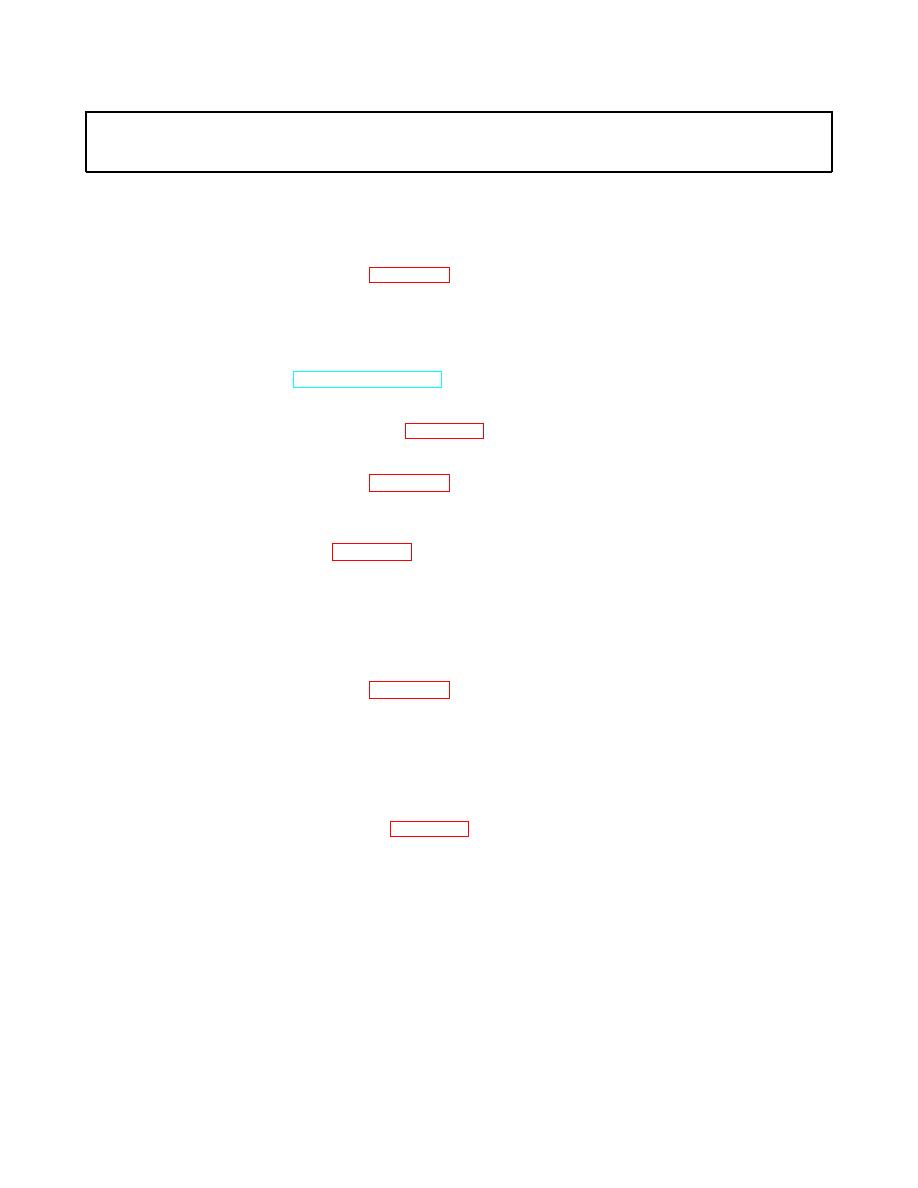
| Tweet |

Custom Search
|
|

|
||
 TM 55-1905-223-24-1
Table 2-2. Troubleshooting-CONT
MALFUNCTION
TEST OR INSPECTION
CORRECTIVE ACTION
STEP 2.
Inspect if intake air system restricted.
Check air restriction indicators on air intake tubes. Replace tubes if necessary.
STEP 3.
Check if turbocharger wheel rubbing.
Replace turbocharger. Refer to para. 2-19.
STEP 4.
Check for intake air leaks between turbocharger and air cleaner.
Tighten all connections.
STEP 5.
Check if fuel return line restricted.
Replace stuck valve (TM 55-1905-223-10).
STEP 6.
Check if injector loose or valve adjusted incorrectly.
Adjust valves and injectors. Refer to para. 2-31.
STEP 7.
Check if turbocharger turbine seal leakage.
Replace turbocharger. Refer to para. 2-19.
STEP 8.
Check if injector cups damaged.
Hold down injectors one at a time at idle. Observe change in smoke lev l.
e
Replace injector. Refer to para. 2-31.
24. Engine Crankcase Gases (Blowby), Excessive.
STEP 1.
Check for restricted crankcase breather vent tube.
Check breather tube restriction. Replace as necessary.
STEP 2.
Check for turbocharger seals leaking.
Replace turbocharger. Refer to para. 2-19.
STEP 3.
Cylinder head valve guide wear.
Evacuate to general support maintenance procedures to check cylinder head valve guide.
25. Engine Noise, excessive.
STEP 1.
Check for excessive valve or injector clearance.
Adjust valve and injector. Refer to para. 2-30.
STEP 2.
Check for damaged push rod or cam follower.
Check push rods and cam followers. The roller must rotate easily. If it doesn't, evacuate to general
support.
STEP 3.
Check if main or connecting rod bearings loose or damaged.
Refer to "Connecting Rod Noise" or "Main Bearing Noise," Malfunctions 26 or 27.
STEP 4.
Piston rings broken or worn.
Refer to direct support for corrective action.
2-32
|
||
 |
||